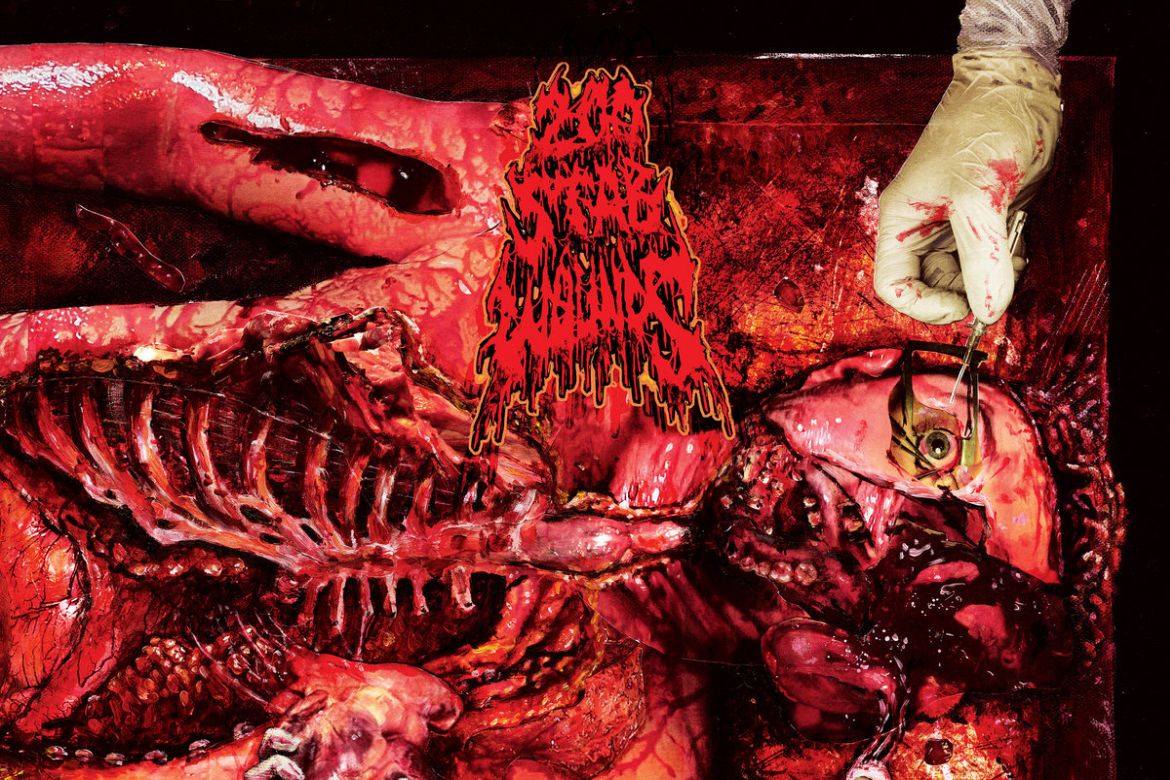“Can you hear the screams? Can you hear the screams!”
With their signature sound that merges aspects of old school death metal with the best parts of hardcore and thrash, 200 Stab Wounds have consistently built up their reputation as one of modern death metal’s pioneers since the release of their formal debut, Slave to the Scalpel, in 2021. With their first album, the band adequately displayed their unique take on death metal with a grotesque yet refined style – filled with tons of pinch harmonics and vile lyrical content. Slave to the Scalpel proved that the band were more than just their distinctive name, and now they await the release of one of Metal Blade Records’ most anticipated albums of this year, with their sophomore record, Manual Manic Procedures.
Now I understand that dedicated fans who have discovered a band during their debut are always worried about the sophomore album not living up to its well-loved predecessor; however, I can proudly say that 200 Stab Wounds have not disappointed with their upcoming release. Manual Manic Procedures is a well-constructed continuation of their previously demonstrated sound; however, it’s not just a complete copy. Instead, the album explores a more mature and polished take on 200 Stab Wounds’ style, which stays within the inaccessible extremes of death metal, whilst simultaneously offering an immersive quality with its clean approach to production and addition of atmosphere.
Speaking of the production, Manual Manic Procedures sonically experiments with a variety of subtle yet impactful techniques, textures, and tonalities. The main bulk of the album explores a more pristine approach to the sound quality, with extremely wide and clean drums tones, as well as a balanced mix of instrumentation. The performances from each band member feels extremely tight yet doesn’t feel sterile or overly edited, unlike what you may find in other subgenres of metal. In contrast to this, Manual Manic Procedures also blends this clean take with an absolutely filthy and gritty attitude to music production. For instance, the album’s fifth track, “Led To The Chamber / Liquified”, ends with an ear crushing use of noise, feedback, and pure hardware distortion to create an abrasive soundscape that almost acts as an auditory representation of the song’s title. This idea and use of conflicting production also concludes the album, with a variety of piercing noise and crunchy static heard towards the end of “Parricide”.
Throughout Manual Manic Procedures, there’s a great sense of familiarity, with Steve Buhl’s iconic brutal vocal style and sharp guitar tones, as well as the relentless drumming of Owen Pooley. However, there is also plenty of instrumental and vocal experimentation that is more than successful in its aims and doesn’t step too far out of their comfort zone. The band explore new riff structures, drum rhythms, and guitar solos with great ease and fluidity. Furthermore, Buhl expands on his vocal style with the use of varying vocal ranges to create Deicide-esque double tracked vocals (if you know, you know). This is best heard in “Flesh From Within”, where this technique is extremely effective in adding the “horror” to their horrific lyrical subjects.
As mentioned previously, another notable aspect within Manual Manic Procedures is its creation and use of atmosphere. The album opens with “Hands Of Eternity”, which presents the listener with a clean guitar introduction that is drowned in reverb and various other effects. This Slayer-like melodic idea creates an eerie soundscape that actually appears a few times throughout the release, acting as a motif and adding a sense of circularity or cohesion to the album. Additionally, other atmospheres or soundscapes are meticulously crafted, as heard in “Led To The Chamber / Liquified”, which features synthesiser leads, odd samples, and other unnerving sounds. These combine to create an amalgamation of noise that paints an almost gothic, aural landscape of gore and blood-soaked walls.
A final stand out for Manual Manic Procedures would have to be its use of collaboration. Features have somewhat become more common in the death metal scene, with 200 Stab Wounds themselves featuring on tracks from hardcore band, Pain Of Truth, as well as brutal death metal-ers, Snuffed On Sight. Evidently, it was about time that the band get a feature of their own, which brings us to the album’s eighth track and final single, “Ride The Flatline”, featuring Jami Morgan of Code Orange. Despite the songs short duration, the track is packed full of varying structures, tight riffs, and brutal drumming. The conflicting blend of Buhl’s and Morgan’s vocals truly enhances the track, adding a unique quality that cannot be found elsewhere in the band’s discography. Additionally, Morgan’s contribution infuses the song with more of 200 Stab Wounds’ hardcore influences, which is one of the band’s key features.
To summarise, Manual Manic Procedures is by far one of 200 Stab Wounds’ most cohesive and refined works to date. Although its use of experimentation and production may be subtle to the average metal listener, the release shows significant growth from the band, both musically and conceptually. Moreover, they excel in every aspect necessary to create an outstanding death metal album, positioning Manual Manic Procedures as a future staple in the genre. I’m confident that 200 Stab Wounds will continue to deliver their unapologetic, gore-infused sound to the death metal scene.
9/10
Manual Manic Procedures releases on the 28th of June and can be pre-ordered here (US, UK and EU links contained therein).

